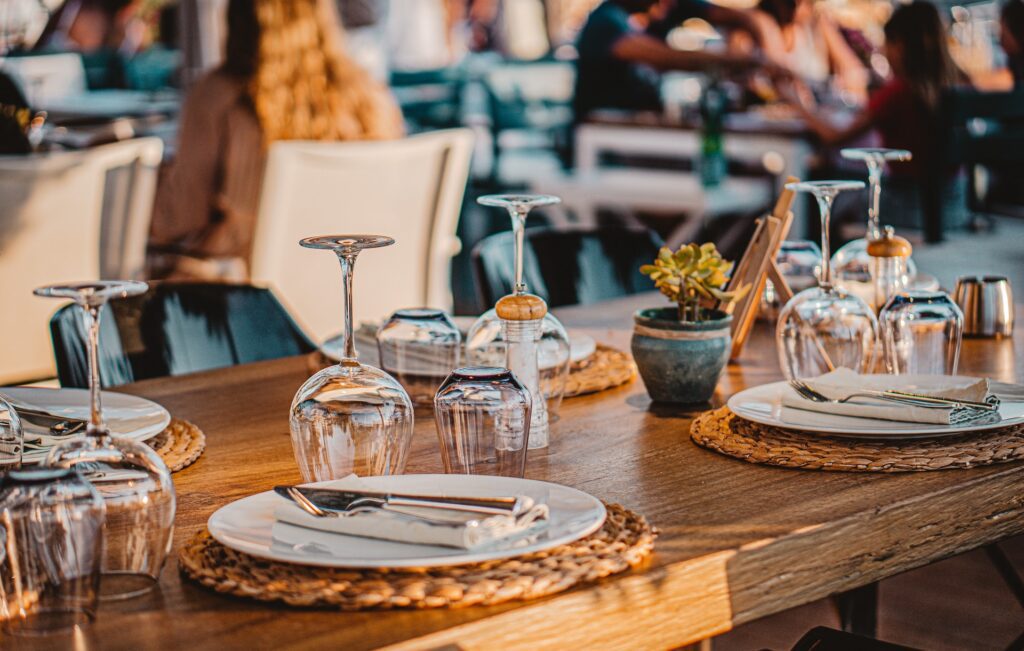The Ultimate Guide To The Live Edge Dining Table
Live edge tables are able to fit in with a variety of decor styles, from traditional to contemporary. By combining these unique tables with metal bases, a modern look can be achieved.
These pieces of furniture have become a popular way of incorporating the beauty of nature into our homes.
Contents
What Is A Live Edge Slab?
A live edge slab is a section of wood that preserves the natural curves and grooves of the tree from which it originated. This makes them a great choice for rustic furniture, and they look compelling in both traditional and modern dwellings. Live edge tables are created by expert craftsmen who select and cut the slabs before sanding and polishing them. Depending on the slab, it may contain holes or bark inclusions that need to be sanded down to a smooth end result. Finding a supplier who airs- and kiln-dries their slabs before milling them into boards is beneficial, as this helps to prevent the grain from shifting and becoming an issue. Various tree species can be used to make attractive live edge slabs, although certain types are more preferred than others.
What Are The Benefits Of A Live Edge Table?
The natural look of a live edge table gives your home a unique aesthetic different from traditional wood tables. These tables add warmth and character to your living space and can be paired with many different styles of chairs. They also work well in rustic building designs and industrial and modern designs. Live edge tables are eco-friendly, utilizing the entire tree, and no part is wasted.
Live edge dining tables are a high-end product due to the expert craftsmanship involved in creating them. The woodworker must first select the perfect slab of wood, ensuring it has just the right amount of curves and bumps to make a functional furniture piece. The slab’s edges must be carefully sanded to remove splinters and sharp corners while preserving their raw natural beauty. The table top must then be sanded and finished with a stain to accentuate the wood grain.
A live edge dining table can be expensive, but the price tag makes sense when you consider the amount of time and expertise that goes into making it. These pieces of furniture are one-of-a-kind and bring a sense of nature into your home that is unmatched by any other type of furniture. They also make a great conversation piece and can be used as an accent piece in any room.

How Do I Choose The Right Wood Table Legs For My Live-Edge Table?
The choice of wood table legs for a live edge table is important, as it will determine the overall look and feel of the piece. Wooden legs offer a classic option that blends well with many different design aesthetics and can be stained or painted to match the room’s color scheme. Metal legs, on the other hand, offer a more modern and contemporary style that can be an exciting contrast to the natural beauty of a live edge slab. Whether you choose a traditional wooden base or a unique metal leg, the key is to keep the rest of the table simple. A live edge table is a work of art in its own right, and it’s important to let the piece shine without distracting accessories. Some suggestions for accessorizing a live edge table include a row of unique planters down the center, a large eye-catching tray, or a uniquely shaped sculptural bowl.
The process that goes into creating a live edge wood table leg is truly amazing and highlights the expert craftsmanship involved in these unique furniture pieces. Each step of this journey allows artists to showcase their skills and create a truly one-of-a-kind table, from selecting the perfect tree to milling it while preserving the natural edges to crafting the finished product.
How Do I Care For My Live Edge Table?
Like any wood, live edge tables are prone to moisture damage. This can lead to swelling or cracking over time, which isn’t good for the structure of your table. To avoid this, wipe down your live edge piece regularly with a damp cloth or sponge to remove any excess moisture that may be sitting on the surface.
Using coasters for drinks and other items on your table is also important. Live edge tables have a lot of ridges, cracks, and holes that can easily collect liquid spills, damaging the finishing and leaving behind a gunky residue. If you want to remove a sticky or dirty spot on your live edge piece, use a microfiber cloth with a plush, absorbent surface. This is a great way to clean surfaces without scratching or leaving streaks. While many people understand that live edge slabs are a beautiful option for furniture, not everyone knows how to care for their new piece of home décor properly. By following these simple tips, you can ensure your live edge table is a focal point of your home for years.

